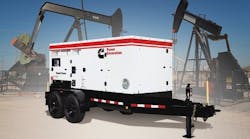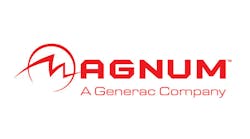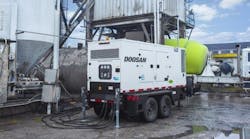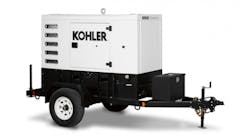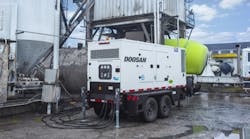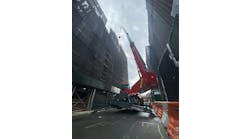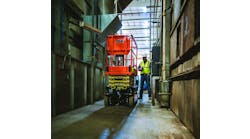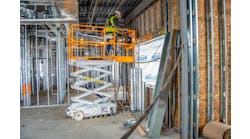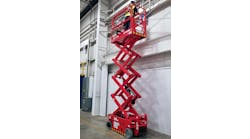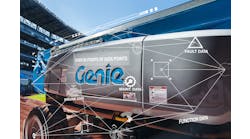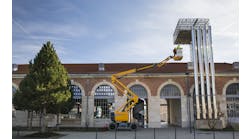Interviews with Generator Manufacturers: Niche Markets Require More Knowledge
RER’s Michael Roth talks to John Gibbons, general manager of the North American rental business for Cummins Power Generation on niche rental markets, the benefits of Tier 4 engines, specking machines for the climate, and the growth of power generation rentals.
RER: What is new in generator technology both at Cummins and the generator industry as a whole?
Gibbons: The newest thing is that we’ve moved out of Tier 4 Interim and into Tier 4 Final, and various manufacturers are achieving that EPA mandate by different means. Some engines use exhaust gas recirculation with diesel exhaust fluid and selective catalytic reduction and a diesel particulate filter. Cummins is able to meet the standards with just EGR, SCR and DEF – we don’t need to use a DPF on our systems – which is great for our customers. From a cost standpoint, the new Cummins Tier 4 Final products are slightly higher in cost, but by eliminating the DPF we have a system that is virtually maintenance free and saves over the long run. The Cummins system also eliminates the possibility of shutdowns caused by DPF clogging. The EPA regulations impact all manufacturers of mobile generation equipment, of course, and create manufacturing challenges. But Cummins is striving to find the best solutions that benefit its rental dealers and their customers.
How have generators in general improved their performance capability and functionality?
We are constantly working to make our generator sets run a little quieter, perform a little better and offer more flexibility for various applications. We have developed a number of rental packages to take care of the current oil and gas boom, for example. We have a lot of units in the oil patches in North Dakota, Canada, Oklahoma and Texas. As a result, we’ve developed more cold weather and extreme service packages to go on our base units. We haven’t created an entirely new spec, but we’ve modified our existing units and added such things as diesel-fired heaters, heated crankcase ventilation systems and heater fuel modules and extended oil-change systems – everything users need for a remote mining or oil and gas operation that needs longer service intervals and needs to run at minus 40 F. Reliable power is extremely important.
Cummins has improved fuel efficiency as much as 7 percent on some of our engines, getting more horsepower out of the same fuel input. That’s important for customers who usually bear those costs. On our Tier 4 Final web site (http://www.rentaltier4answers.com), users can calculate the cost of diesel fuel and DEF for a given generator, load and runtime. This shows users that they are still saving money with the new Tier 4 Final machines as compared to the Tier 3 machines. Overall, the new units will show an operational cost savings to the end customer who is paying the fuel bill. As fuel use goes down, DEF use goes down as well.
In the future, our machines will be even more versatile than today. The newest Cummins mobile rental generators allow either 50 or 60 Hz operation – which is ordinarily not a big issue in North America, but it helps if they are running foreign equipment that requires it. We’ve made paralleling very easy on our rental generators so that two 200 kW machines can become a 400 kW unit. It allows the end user, who may not want to invest in a 400 kW machine, to buy two 200 kW machines, and still go after larger projects. On future Tier 4 Final units, paralleling functions will be standard on our rental units down to about 150 kW, and optional at some units below that size.
The power generation rental market has been growing quite a bit in the US and globally. From Cummins’ perspective, what are the factors driving this growth?
Some of the growth is a result of the economic cycles. If you look at past recession cycles, the power generation industry has usually been a leading indicator. It typically goes down about a year before a recession starts and then goes up about a year before the recession ends. Since a lot of rental generation is used in construction and infrastructure, those projects are the ones that typically get put on hold when the economy starts going bad. The industry saw a pullback in 2007, about a year before the recession occurred, but Cummins also had a very good sales year starting in 2011, about a year before the recession officially ended. Right now, as a whole, the rental industry is growing faster than the GDP. We’ve seen tremendous growth in our rental dealer base, and these dealers have had extremely high utilization rates across the board. When utilization is up, dealers can buy more equipment because all of the existing equipment is out in the field.
Another area of growth had been in the area of rentals for standby power applications. Some large retailers have equipped their stores with quick-connect electrical boxes and contracted with rental dealers for emergency power in case of utility outages. We’ve seen this in the Gulf States during hurricane season, and in the certain Midwestern states for winter storm protection. This allows them to have a rental generator delivered and hooked up in anticipation of an outage or within hours after an outage occurs.
For rental companies that are involved in power generation rentals, what are some key tips that you can provide to help them effectively serve their market?
Number one is to know their territory, their market and their customers’ applications. For example, a generator that we might sell to a dealer in Florida would be quite different than one we’re selling to a dealer in Edmonton, Alberta – due to ambient conditions and types of loads. There are a lot of rental dealers that go after niche markets that require more knowledge of specific applications and loads that need to be served. If a dealer is serving a lot of pump jack loads in oil and gas applications, then that dealer needs to be sure that his units have oversized alternators that can handle the load and last longer. Likewise, a dealer in California serving the motion picture industry is going to need units that have maximum sound attenuation, for example.
Cummins provides support through our Sales Application Engineer Group, and we help rental dealers solve application issues with their customers. Dealers need to put the right generator on the application so it’s not overloaded or loaded too lightly. We see a lot of over-sizing where dealers will supply a customer with a 150 kW unit for a 60 kW load – and that’s not good for the engine. Running a generator at less than 30 percent of its rated load is not good for a Tier 3 engine, and it’s even harder on a Tier 4 Final engine.
Are you involved in the propane-powered generator market?
Cummins currently does not offer natural gas or propane-fueled units for the rental market. However, we do plan to move forward with development of products designed by Cummins to meet this market need.
